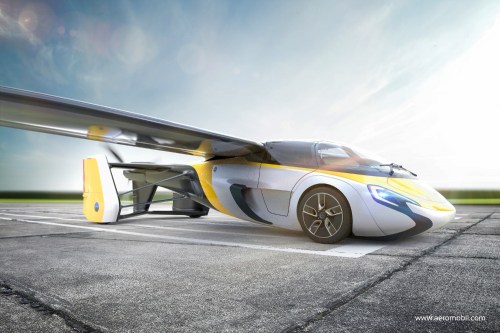
Starting in February, the “flying car nanodegree program” gives students the opportunity to develop autonomous flight software engineering skills, while learning about flying car systems and drone robotics.
It wasn’t so long ago that flying cars were merely a schoolkids’ fantasy (or a former Russian pilot’s misguided delusion), but now those children have grown up and are working to make them a reality. From smaller outfits like AeroMobil and DeLorean Aerospace to giants like Airbus and Uber, designs for such vehicles are appearing with increasing frequency.
Udacity’s latest nanodegree — a description that refers to its short completion time — has been created by Stanford University professor Sebastian Thrun, who once led Google’s self-driving car project.
Aimed at those interested in flying cars, drones, autonomous systems, and the future of smart transportation, students who join Thrun’s course will take two three-month terms online, and will need to set aside at least 15 hours a week for study. Term one covers aerial robotics and costs $899, while term two delves into intelligent air systems and costs $1,200.
The course promises to prepare students to be at the forefront of the “technological and societal revolution” that the flying car could give rise to, according to Udacity.
“In this program, you’ll learn from world-class experts, work with cutting-edge tools, and tackle real-world challenges ranging from emergency aid to fleet coordination,” the course notes explain. “You’ll master technologies in planning, controls, coordination, and more. Most importantly, you will learn by doing, writing aircraft-ready code that you can run on your own drones.”
Indicating that the course requires some serious brain power, Udacity says it can’t accept applicants who don’t yet have the necessary skills to participate. These include knowledge of math (including linear algebra and statistics) and basic physics. You’ll also need intermediate-level programming experience in Python and C++. In case you’re not quite there yet, Udacity offers a number of free and paid courses where you can build up those skills.
Kitty Hawk Flyer
Besides his Google experience, Thrun also knows a thing or two about personal flying machines. He helped to create the Kitty Hawk Flyer, an ultralight electric flying machine that DT wrote about in 2017. The team behind the Kitty Hawk Flyer describe its mission as “making the dream of personal flight a reality … We believe when everyone has access to personal flight, a new, limitless world of opportunity will open up to them.” Perhaps a graduate of Thrun’s new Udacity course can help make it happen.
Udacity was founded back in 2011 to offer large-scale online courses to large numbers of people. The most recent data shows that more than four million students have enrolled in its free courses and more than 11,000 have taken part in nanodegree programs.
More information about Udacity’s flying car nanodegree can be found on its website.